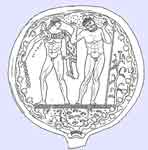.
It is what the majority appear to do, like people groping in the dark; they call it a cause, thus giving it a name which does not belong to it. That is why one man surrounds the earth with a vortex to make the heavens keep it in place, another makes the air support it like a wide lid. As for their capacity of being in the best place they could possibly be put, this they do not look for, nor do they believe it to have any divine force, but they believe that they will some time discover a stronger and more immortal Atlas to hold everything together..." Socrates in Plato's Phaedo

The Punishment of Atlas and Prometheus, from a Vatican Museum Vase, Atlas carries the heaven
|
The First-century B.C.E. historian Diodorus Siculus described Atlas, the father of such an Atlantean civilization, as the man who “discovered the sphaerical nature of the heavens. , An Introduction to Pythagorean Sphaerics” |
In Greek mythology, Atlas (Ἄτλας, Άτλας) was the son of the Titan Iapetus and the nymph Clymene, and brother of Prometheus. He was the father of the Hesperides, Maera, the Hyades, Calypso and the Pleiades. Because Atlas fought on the side of the Titans in the war with the gods of Mount Olympus, Zeus punished him with the burden of carrying the heavens upon his shoulders. Atlas was turned to stone by Perseus using Medusa's head in the place where the Atlas mountains now stand, after he threatened Perseus when wanting to speak to his father Zeus about the punishment that had fallen upon him. He is also known as one of the kings of Atlantis.
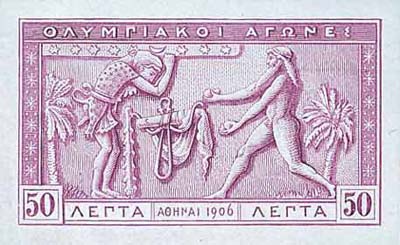
Atlas offers the Hesperides apples to Heracles, drawing from a Lekythos, Athena painter, c. 490/480 BC, National Archaeological Museum Athens, Inv. 1132..
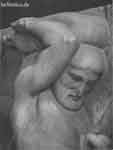
As part of his Twelve Labors, the hero Heracles tricked Atlas into retrieving some of the golden apples of the Hesperides for him by offering to hold the heavens for a little while. Upon his return with the apples, Atlas decided not to take the heavens back from Heracles. Heracles tricked him again by agreeing to take his place if he would only take the sky again for a few minutes so Heracles could rearrange his cloak as padding on his shoulders. Atlas agreed and Heracles left.
Since the middle of the sixteenth century, he is often shown in cartographic atlases. However it was not he but rather the mythical King Atlas that was depicted by Mercator in the first book to bear the name "atlas" and who gave his name to that type of book. Atlas continues to be a commonly used icon in western culture (and advertising), as a symbol of strength or stoic endurance. In such contemporary depictions, he is often shown kneeling over on one knee while supporting an enormous round globe on his back and shoulders.
The etymology of the name Atlas is uncertain and still debated: some derive it from the Proto-Indo-European root *tel, 'to uphold, support'; others suggest that it is a pre-Indo-European name.
"Atlas" is also the presently used name of many objects and places (see Atlas (disambiguation)).
Atlas in Greek Art
Pausanias 6.19.8
(The treasury of the Epidamnians) contains the heavenly sphere supported by Atlas, and also Herakles and the apple-tree of the Hesperids, with the serpent coiled about it. These too are of cedar-wood, the work of Theokles, the son of Hegylos, who is stated by the inscription on the sphere to have assisted his son in the making.
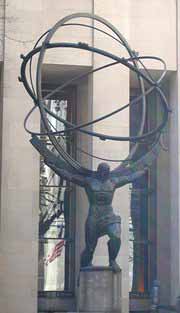
Atlas, Rockefeller Center, New York City

Hercules as Atlas, Statue in Port Merion (Portmeirion), Wales
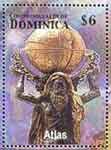
Atlas a moon of Saturn
Sources
See also : Greek Mythology. Paintings, Drawings
Greek Mythology Books
| Ancient Greece
Science, Technology , Medicine , Warfare, , Biographies , Life , Cities/Places/Maps , Arts , Literature , Philosophy ,Olympics, Mythology , History , Images Medieval Greece / Byzantine Empire Science, Technology, Arts, , Warfare , Literature, Biographies, Icons, History Modern Greece Cities, Islands, Regions, Fauna/Flora ,Biographies , History , Warfare, Science/Technology, Literature, Music , Arts , Film/Actors , Sport , Fashion --- |
Retrieved from "http://en.wikipedia.org"
All text is available under the terms of the GNU Free Documentation License

